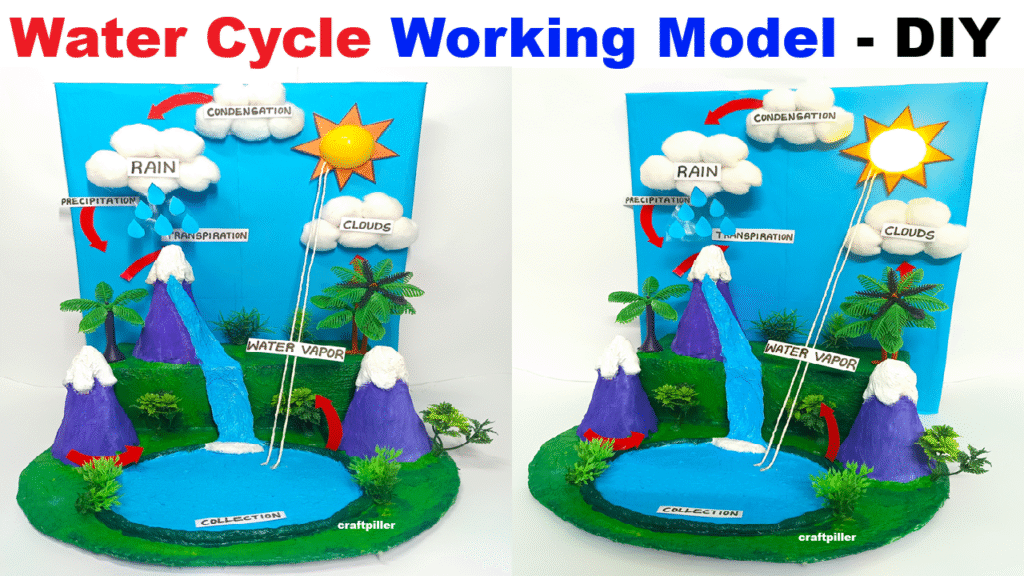“This model shows the natural Water Cycle that occurs on Earth. Water evaporates from oceans and rivers due to the sun’s heat, condenses to form clouds, then falls as rain or snow (precipitation), and finally collects in rivers, lakes, and oceans. This cycle is essential for life on Earth.”

This model creatively demonstrates the four main stages of the water cycle:
- Evaporation
- Condensation
- Precipitation (Rain)
- Collection / Runoff
Materials Required:
- Cardboard sheets/box (to make mountains and base)
- Cotton (for clouds)
- Plastic sheet or thin transparent folder (for water layer)
- Blue, green, white, brown paint
- Water bottle with small holes or a syringe (to simulate rain)
- Small container or bowl (for water collection at bottom)
- Straw or pipe (to guide water flow)
- Glue gun / Fevicol, scissors
- Optional: LED light (for sun) and mirror for sunlight reflection
Video Step-by-Step Instructions:
1. Make the Base:
- Use a flat cardboard sheet as your base.
- Paint blue areas for ocean/sea, green for land, and brown for mountains.
2. Create Mountains and Landforms:
- Cut and layer cardboard to make 3D mountains on one side.
- Paint brown/gray and add snow caps using white paint or cotton.
- Add trees or grass patches using green paper or paint.
3. Evaporation (Sun’s Heat):
- Paint or place a sun (yellow circle) in the sky.
- Draw arrows or use transparent straw to show water rising as vapor.
- Optional: Add a small mirror or LED light as the sun.
4. Condensation (Cloud Formation):
- Use cotton balls to create fluffy clouds in the sky.
- You can sprinkle a little water on cotton to show moisture content.
5. Precipitation (Rain):
- Use a small plastic bottle with pinholes or a syringe to simulate rain.
- When you squeeze water through the clouds, it rains over the mountain.
- Let the water flow down the mountain using plastic sheet or straw into a lake/ocean at the bottom.
6. Collection (Water Runoff):
- Create a river or stream path using a clear plastic strip or painted trail.
- Let the rainwater collect in a bowl or collection pond.
- Repeat the cycle manually to demonstrate again.

